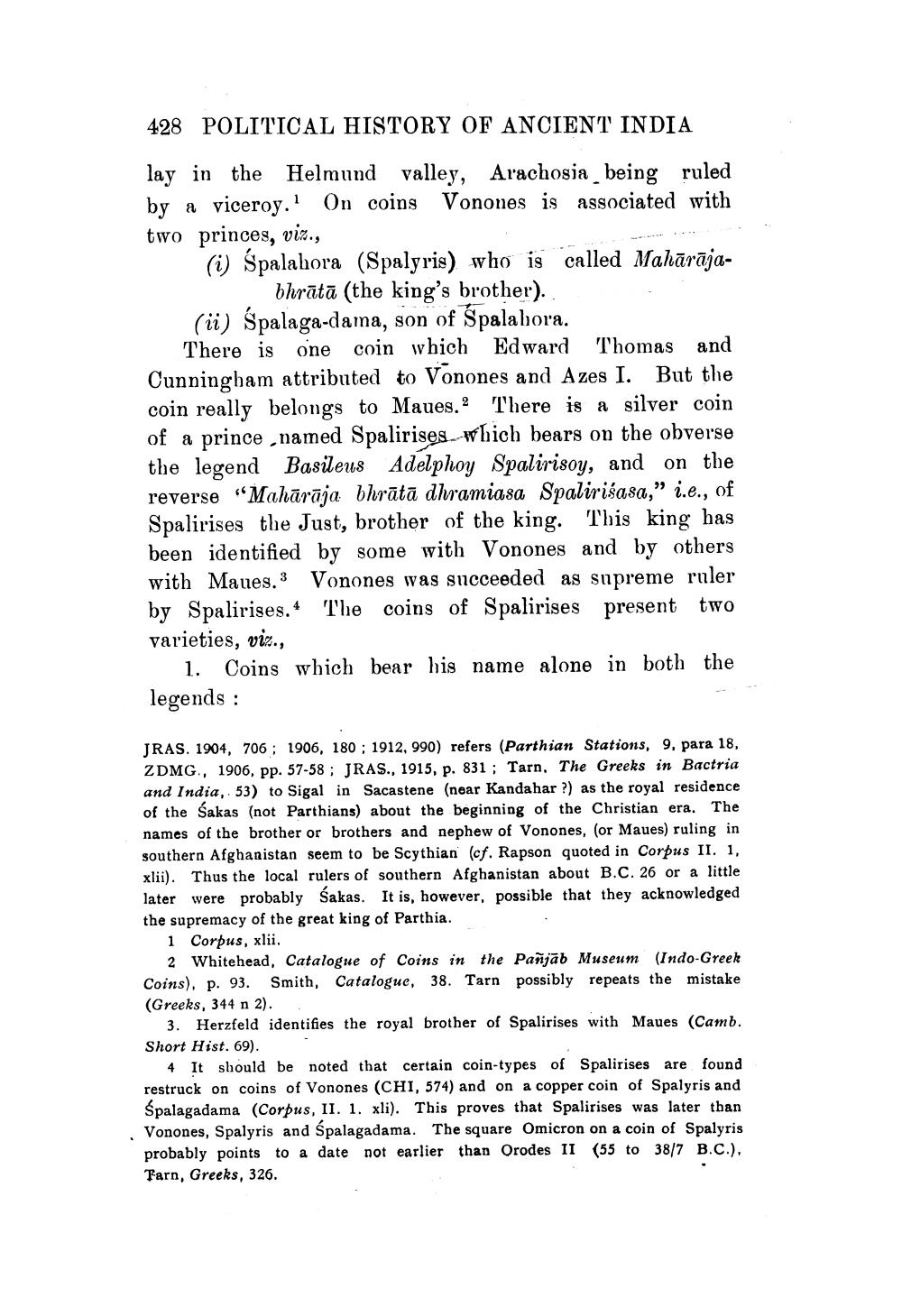________________
428 POLITICAL HISTORY OF ANCIENT INDIA lay in the Helmund valley, Arachosia being ruled by a viceroy.! On coins Vonones is associated with two princes, viz., (i) Spalahora (Spalyris) who is called Mahārāja
bhrātā (the king's brother). (ii) Śpalaga-dama, son of Spalabora.
There is one coin which Edward Thomas and Cunningbam attributed to Vonones and Azes I. But the coin really belongs to Maues. There is a silver coin of a prince ,named Spalirises which bears on the obverse the legend Basileus Adelphoy Spalirisoy, and on the reverse “Mahārāja bhrātā dhramiasa Spaliriśasa," i.e., of Spalirises the Just, brother of the king. This king has been identified by some with Vonones and by others with Maues. Vonones was succeeded as supreme ruler by Spalirises. The coins of Spalirises present two varieties, viz.,
1. Coins which bear his name alone in both the legends :
JRAS. 1904, 706 ; 1906, 180 ; 1912, 990) refers (Parthian Stations, 9. para 18, Z DMG., 1906, pp. 57-58; JRAS., 1915, p. 831 : Tarn, The Greeks in Bactria and India, 53) to Sigal in Sacastene (near Kandahar ?) as the royal residence of the Sakas (not Parthians) about the beginning of the Christian era. The names of the brother or brothers and nephew of Vonones, (or Maues) ruling in southern Afghanistan seem to be Scythian (ef. Rapson quoted in Corpus II. 1, xlii). Thus the local rulers of southern Afghanistan about B.C. 26 or a little later were probably Sakas. It is, however, possible that they acknowledged the supremacy of the great king of Parthia.
1 Corpus, xlii.
2 Whitehead, Catalogue of Coins in the Pañjāb Museum (Indo-Greek Coins), p. 93. Smith, Catalogue, 38. Tarn possibly repeats the mistake (Greeks, 344 n 2).
3. Herzfeld identifies the royal brother of Spalirises with Maues (Camb. Short Hist. 69).
4 It should be noted that certain coin-types of Spalirises are found restruck on coins of Vonones (CHI, 574) and on a copper coin of Spalyris and Spalagadama (Corpus, II. 1. xli). This proves that Spalirises was later than Vonones, Spalyris and Spalagadama. The square Omicron on a coin of Spalyris probably points to a date not earlier than Orodes II (55 to 38/7 B.C.). Tarn, Greeks, 326.




